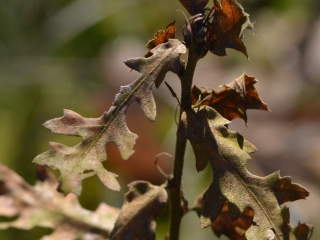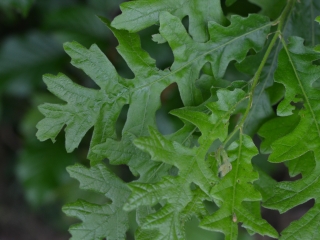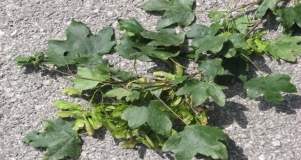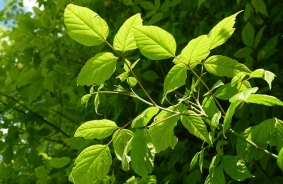Turkey oak Quercus cerris
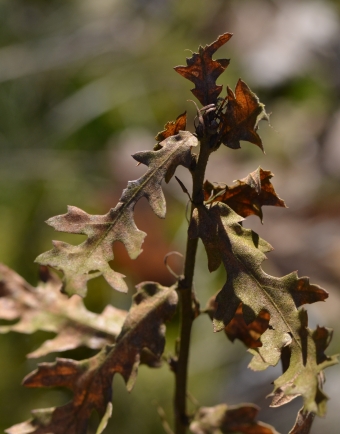
Features
Quercus cerris, the Turkey oak or Austrian oak, is an oak native to south-eastern Europe and Asia and is also widespread in Slovenia.
| Species | Trees (Macrofanerophytes) |
| Living space | Clean or mixed forest, Deciduous forest |
| Size | 30-35 m |
Description
Quercus cerris is a large deciduous tree growing to 25–40 m tall with a trunk up to 2 m diameter. The bark is dark grey and deeply furrowed. On mature trees the bark fissures are often streaked orange near the base of the trunk. The glossy leaves are 7–14 cm long and 3–5 cm wide, with 6–12 triangular lobes on each side; the regularity of the lobing varies greatly, with some trees having very regular lobes, others much less regular. The flowers are wind-pollinated catkins, maturing about 18 months after pollination; the fruit is a large acorn, 2.5–4 cm long and 2 cm broad, bicoloured with an orange basal half grading to a green-brown tip; the acorn cup is 2 cm deep, densely covered in soft 4–8 mm long 'mossy' bristles. First year acorns are very bitter, but are eaten by jays and pigeons; squirrels usually only eat them when other food sources have run out. The wood of the tree is reddish, hard and dense. Due to these properties, it is used for railway sleepers. In the air, wood likes to crack.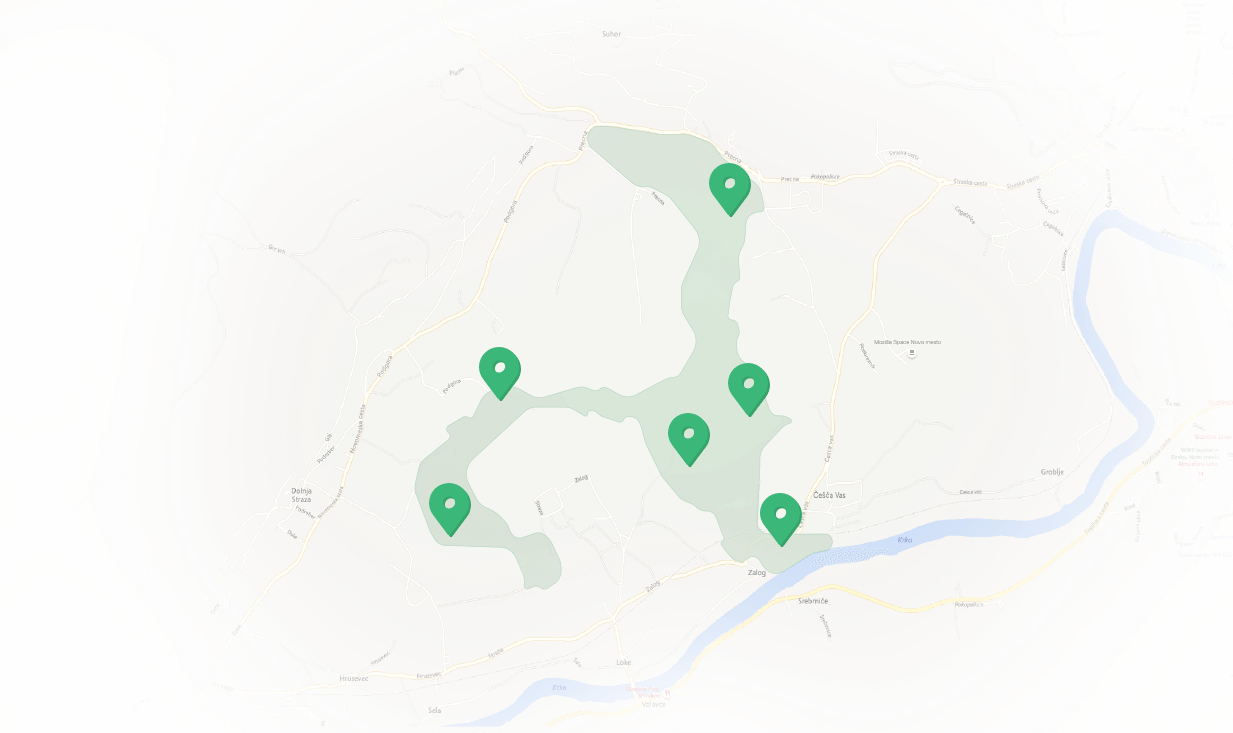
Features Temenica (3)
SPECIAL ogr.

